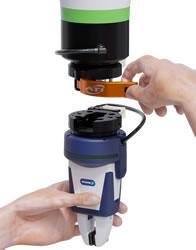Rethink Robotics Releases Intera 5: A New Approach to Automation
Robotics-focused ETFs see big gains, Trump could hasten trend
Microbots: Microsoft's multi-pronged robotics play takes shape
Robotics, artificial intelligence, and 5G are at the heart of Theresa May's new industrial strategy
Artificial fingertip that 'feels' wins international robotics competition
CTRL The Robot. A modern industrial robot for the desktop.
Robotics, Trump and Brexit turn up the heat amid the snow of Davos
Robots: Legal Affairs Committee calls for EU-wide rules
The 'intelligent' robot companion that plays chess as a hobby, serves coffee and learns from its own experiences
Google Tasks Robots with Learning Skills from One Another via Cloud Robotics
Japan's Rust Belt Counting on Robonomics to Run Assembly Lines
A Robotics ETF Tries to Find its Way
BERNSTEIN: China's insane spending on robotics is fundamentally changing capitalism
Robots won't kill the workforce. They'll save the global economy.
Robotics startup Exotec raises $3.5 million to help warehouses pack and dispatch goods using mini robots
Records 346 to 360 of 848
First | Previous | Next | Last
Industrial Robotics - Featured Product

